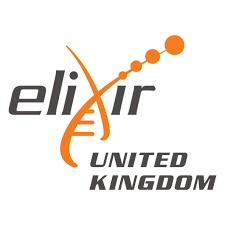GtoPdb is requesting financial support from commercial users. Please see our sustainability page for more information.
heat shock protein 90 beta family member 1
 Target has curated data in GtoImmuPdb
Target has curated data in GtoImmuPdb
Target id: 2904
Nomenclature: heat shock protein 90 beta family member 1
Abbreviated Name: HSP90B1
Family: Heat shock proteins
Contents:
Gene and Protein Information  |
||||||
| Species | TM | AA | Chromosomal Location | Gene Symbol | Gene Name | Reference |
| Human | - | 803 | 12q23.3 | HSP90B1 | heat shock protein 90 beta family member 1 | |
| Mouse | - | 802 | 10 43.05 cM | Hsp90b1 | heat shock protein 90, beta (Grp94), member 1 | |
| Rat | - | 804 | 7q13 | Hsp90b1 | heat shock protein 90 beta family member 1 | |
Previous and Unofficial Names  |
| Endoplasmin | GRP-94 | heat shock protein 90 | heat shock protein 90, beta (Grp94), member 1 | HSP90B1 |
Database Links  |
|
| Alphafold | P14625 (Hs), P08113 (Mm), Q66HD0 (Rn) |
| CATH/Gene3D | 3.30.565.10 |
| ChEMBL Target | CHEMBL1075323 (Hs), CHEMBL3425396 (Mm) |
| Ensembl Gene | ENSG00000166598 (Hs), ENSMUSG00000020048 (Mm), ENSRNOG00000026963 (Rn) |
| Entrez Gene | 7184 (Hs), 22027 (Mm), 362862 (Rn) |
| Human Protein Atlas | ENSG00000166598 (Hs) |
| KEGG Gene | hsa:7184 (Hs), mmu:22027 (Mm), rno:362862 (Rn) |
| Pharos | P14625 (Hs) |
| RefSeq Nucleotide | NM_003299 (Hs), NM_011631 (Mm), NM_001012197 (Rn) |
| RefSeq Protein | NP_003290 (Hs), NP_035761 (Mm), NP_001012197 (Rn) |
| UniProtKB | P14625 (Hs), P08113 (Mm), Q66HD0 (Rn) |
| Wikipedia | HSP90B1 (Hs) |
Download all structure-activity data for this target as a CSV file 
| Inhibitors | |||||||||||||||||||||||||||||||||||||||||||||||||||||||||||||||||||||||||||||||||||||||||||||||||||||||||||||||||||
| Key to terms and symbols | View all chemical structures | Click column headers to sort | |||||||||||||||||||||||||||||||||||||||||||||||||||||||||||||||||||||||||||||||||||||||||||||||||||||||||||||||||
|
|||||||||||||||||||||||||||||||||||||||||||||||||||||||||||||||||||||||||||||||||||||||||||||||||||||||||||||||||||
| Immunopharmacology Comments |
| HSP90B1 is an endoplasmic reticulum chaperone required for proper folding and cell surface export of newly synthesized Toll-like receptor and integrin (CD11a, CD18 and CD49d) proteins. In its absence TLR responses are ablated, and there is no innate response to microbial stimuli [4].[9]. HSP90B1 binding ligands which inhibit its association with other proteins are being investigated as anti-inflammatory agents (e.g. semapimod). HSP90B1-based autologous protein complexes isolated from cancer cells (e.g. vitespen [8], in Phase 3 clinical trial [5]) are under scrutiny as potential anti-cancer vaccine immunotherapeutics [3,6]. |
References
1. Jiang F, Guo AP, Xu JC, You QD, Xu XL. (2018) Discovery of a Potent Grp94 Selective Inhibitor with Anti-Inflammatory Efficacy in a Mouse Model of Ulcerative Colitis. J Med Chem, 61 (21): 9513-9533. [PMID:30351001]
2. Patel HJ, Patel PD, Ochiana SO, Yan P, Sun W, Patel MR, Shah SK, Tramentozzi E, Brooks J, Bolaender A et al.. (2015) Structure-activity relationship in a purine-scaffold compound series with selectivity for the endoplasmic reticulum Hsp90 paralog Grp94. J Med Chem, 58 (9): 3922-43. [PMID:25901531]
3. Randazzo M, Terness P, Opelz G, Kleist C. (2012) Active-specific immunotherapy of human cancers with the heat shock protein Gp96-revisited. Int J Cancer, 130 (10): 2219-31. [PMID:22052568]
4. Randow F, Seed B. (2001) Endoplasmic reticulum chaperone gp96 is required for innate immunity but not cell viability. Nat Cell Biol, 3 (10): 891-6. [PMID:11584270]
5. Testori A, Richards J, Whitman E, Mann GB, Lutzky J, Camacho L, Parmiani G, Tosti G, Kirkwood JM, Hoos A et al.. (2008) Phase III comparison of vitespen, an autologous tumor-derived heat shock protein gp96 peptide complex vaccine, with physician's choice of treatment for stage IV melanoma: the C-100-21 Study Group. J Clin Oncol, 26 (6): 955-62. [PMID:18281670]
6. Tosti G, Cocorocchio E, Pennacchioli E, Ferrucci PF, Testori A, Martinoli C. (2014) Heat-shock proteins-based immunotherapy for advanced melanoma in the era of target therapies and immunomodulating agents. Expert Opin Biol Ther, 14 (7): 955-67. [PMID:24670226]
7. Wang J, Grishin AV, Ford HR. (2016) Experimental Anti-Inflammatory Drug Semapimod Inhibits TLR Signaling by Targeting the TLR Chaperone gp96. J Immunol, 196 (12): 5130-7. [PMID:27194788]
8. Wood CG, Mulders P. (2009) Vitespen: a preclinical and clinical review. Future Oncol, 5 (6): 763-74. [PMID:19663726]
9. Yang Y, Liu B, Dai J, Srivastava PK, Zammit DJ, Lefrançois L, Li Z. (2007) Heat shock protein gp96 is a master chaperone for toll-like receptors and is important in the innate function of macrophages. Immunity, 26 (2): 215-26. [PMID:17275357]
How to cite this page
Heat shock proteins: heat shock protein 90 beta family member 1. Last modified on 29/10/2018. Accessed on 19/12/2025. IUPHAR/BPS Guide to PHARMACOLOGY, https://www.guidetoimmunopharmacology.org/GRAC/ObjectDisplayForward?objectId=2904.








